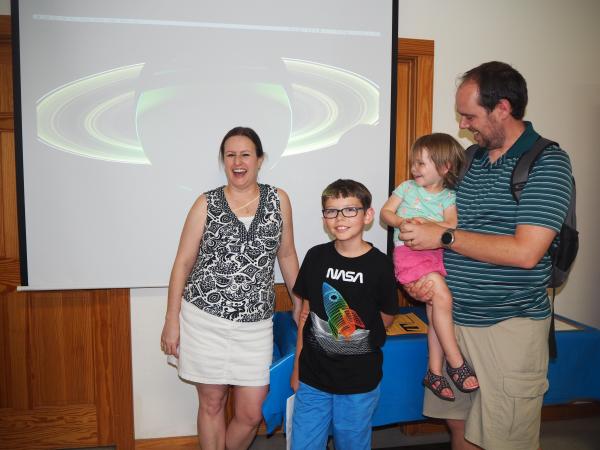Library hosts U.T. astronomer

The Dripping Springs Community Library hosted a talk by Lara Eakins from the U.T. Austin Department of Astronomy on Friday Jun. 7. Eakins spoke about amateur astronomy sighting opportunities for the rest of year, upcoming eclipses over the next five years, and astronomy research projects being done at U.T.
“In objects that can be seen by the naked eye, the planet Jupiter is going to be very bright in the month of June,” Eakins said.
The best night for seeing the gas giant with the naked eye will be Mon. Jun. 10, when Jupiter will brightly rise at sunset from the southeast, appearing as a very bright star. “Monday evening is when Jupiter reaches opposition. Opposition is when the Earth is completely aligned between the Sun and another planet, in this case Jupiter. It’s also when planets are the closest in their orbits,” Eakins said.
On eclipses, Eakins said that Dripping Springs will be the ideal spot to catch a total solar eclipse on Mon. April 8, 2024. “In Dripping Springs, you will probably get about a full 3 minutes of eclipse time,” Eakins said. The eclipse is tentatively estimated to partially begin at 12:30 p.m., with full eclipse occurring at about 1:36 p.m.
On the third subject of her talk, U.T. astronomy research projects, Eakins spoke of the ongoing search for exoplanets, which are planets orbiting other suns, and U.T.’s involvement with the Giant Magellan Telescope, which is being constructed in the country of Chile. “We recently received a $10 million gift from David Booth [co-founder and executive chairman of Dimensional Fund Advisors in Austin]. Obviously we’re very excited about that and the opportunity for astronomy it’s generated,” Eakins said.
Eakins answered astronomy questions from attendees, and also spoke about public viewing opportunities with telescopes on the U.T. campus, as well as the McDonald Observatory in West Texas.
Lara E. Eakins is the Administrative Program Coordinator for the Department of Astronomy at U.T. Austin, and holds a B.A. in Astronomy from U.T. Austin. Her professional interests are public outreach and science communication, Sun and Sun-Earth interactions, and planetary astronomy and Solar System exploration. For more information visit: http://outreach.as.utexas.edu.
For more information on events at the Dripping Springs Community Library, visit: https://www.dscl.org/events. DSCL is located at 501 Sportsplex Road.



